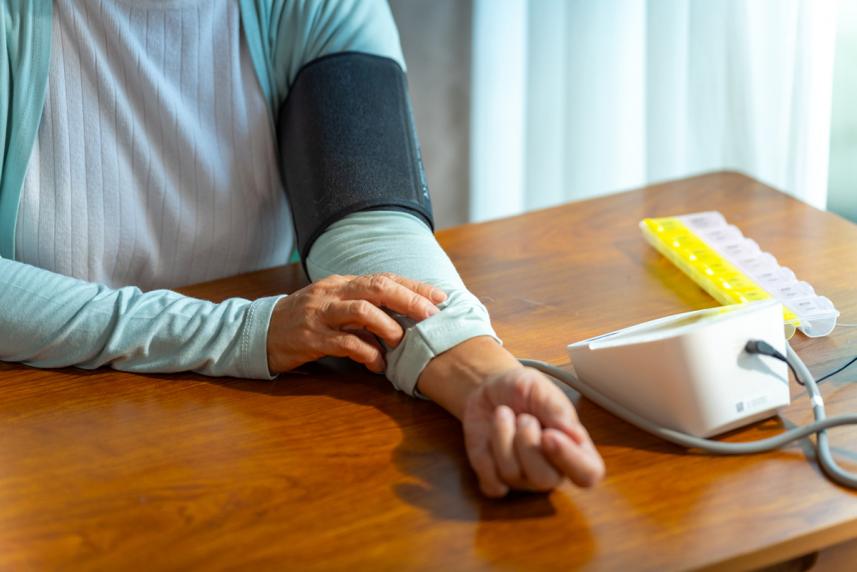DIY blood pressure monitoring: Is it for you?
Checking your blood pressure at home can be a smart health move. Read up on what to look for in a monitor, how to get an accurate reading, and more.

Blood pressure is what powers your body. It’s the rate that your blood brings all those important nutrients and oxygen to your organs so you can go about your day.
In an ideal world, your blood pressure operates on an as-needed basis. Generally speaking, it slows down when you’re relaxed or speeds up when you exert energy.
But sometimes, your blood pressure can’t do a good job of self-regulating. That means your blood’s flow becomes too low or too high against your artery walls. Many factors can cause this irregularity, including age, the foods you eat, and medication.
If your blood pressure is deemed too high or too low, your doctor may ask you to check it regularly. An at-home monitoring machine can help.
Learn why your doctor may want you to monitor your blood pressure at home and the best way to get an accurate reading.
Need a new heart health doctor? Find a participating provider near you here.
Who should monitor their blood pressure at home?
At-home blood pressure monitoring is a convenient way to keep track of your blood pressure and cardiac diseases, says Steven Marshall, a Madison, North Carolina–based registered nurse who has a doctorate in nursing practice. He’s spent much of his career working with patients who have blood pressure issues.
“Patients who are on diuretics (fluid pills), any medications for blood pressure, or who take beta-blockers should keep an eye on their blood pressure,” Marshall says.
Compared with office readings, at-home blood pressure machines can be a good predictor of cardiovascular disease, Marshall notes. That’s because when you take a blood pressure reading at home, you tend to feel more relaxed. In a doctor’s office, people often feel nervous, which can cause your blood pressure readings to be abnormally high. Medical professionals even have a term for this — “white coat syndrome.”
Other reasons to check your blood pressure at home include:
- Evaluating your medicine’s effectiveness
- Monitoring yourself for high blood pressure
- Monitoring yourself for low blood pressure
- Establishing trends so your doctor can make good treatment decisions

Use Find a Doctor on hmsa.com to search for a participating provider near you today.
How to choose a blood pressure machine
There’s no need to spend a lot. You’ll want to choose a blood pressure machine that provides accurate readings. Remember, those readings will influence the treatment decisions that you and your doctor make. “Using poor equipment or improper procedures for monitoring blood pressure will likely cause inaccurate readings,” says Marshall.
Why is that a problem? If you give these readings to your provider and they adjust your medications, you could be at higher risk of developing side effects.
To buy the right blood pressure monitor, follow these recommendations from the American Heart Association (AHA):
- Choose a monitor that has been validated by medical professionals during a review process.
- Pick an automatic, cuff-style monitor for the upper arm.
- Don’t use wrist and finger models. They often give inaccurate readings.
- Be sure the cuff fits your arm. A standard cuff size may be too large or too small for some people.
Once you get the machine, take it to your next appointment. Run a check with your provider to ensure it’s giving you an exact reading. Try to do this every six months.
How to measure your blood pressure at home
Follow these instructions from the Centers for Disease Control and Prevention (CDC) for using your monitor at home.
- Sit comfortably with your back supported and with both feet on the ground. Don’t cross your legs as that can affect the reading.
- Lift your arm to the level of your heart on a table, desk, or an armrest.
- Wrap the cuff around your arm, above the bend in your elbow. It should be against your skin, not over clothing.
- Begin taking your blood pressure. Make sure that you’re still and not fidgeting, moving, or talking.
- Take at least two readings. Wait one minute in between.
- Write the results in a log or notebook, and include the date and time of day.
Tips to make sure your measurements are correct
Now that you know how to use your monitor correctly, there are other things you can do to get accurate readings.
- Rest five minutes before taking your blood pressure. Activity can temporarily raise blood pressure and may cause a false high reading.
- Don’t smoke or drink caffeinated beverages for 30 minutes before taking a reading. Nicotine and caffeine raise blood pressure and create false high readings.
- Use the bathroom before taking your blood pressure. A full bladder can affect your reading.
- Take it at the same time each day. This helps reveal your blood pressure trends. Ask your doctor if you should take your blood pressure before or after your medication.
When to contact your doctor
Writing down your numbers each time you take your blood pressure is key. This will give you a sense of what’s normal for you over time. Plus, your doctor may want to see your numbers at your next visit.
If you get an abnormal reading, Marshall suggests waiting and resting 15 minutes before taking it again. Abnormal blood pressure includes:
- Anything over 130/80
- Anything under 90/60 (low blood pressure)
If your blood pressure is still off compared to what you usually see, call your doctor.
Additional sources:
High blood pressure symptoms and causes: Centers for Disease Control and Prevention
Choosing a monitor: American Heart Association
Measuring blood pressure at home: Centers for Disease Control and Prevention
Low blood pressure: National Institutes of Health
Understanding blood pressure readings: American Heart Association
H3832_8750_848451_5MS542_24_C
© 2023, Linkwell Health, Inc. All content owned or licensed by Linkwell Health, Inc. All rights reserved.


